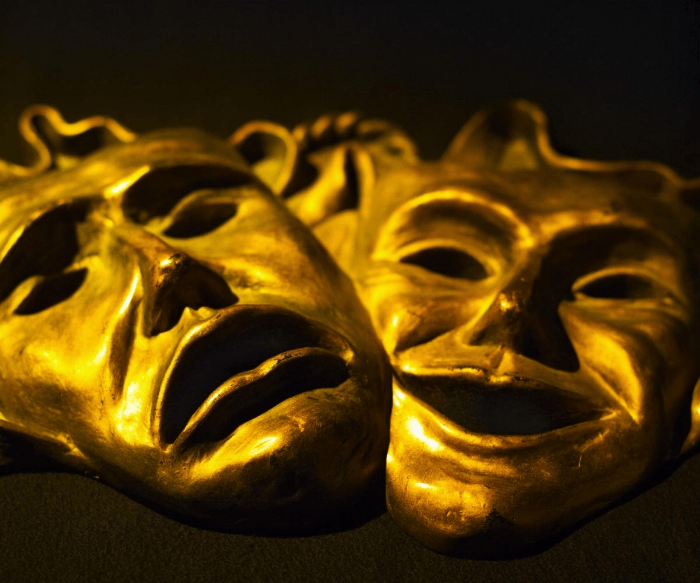When do we consider theatre having started in this class?
What is 600 BCE?
What do these masks represent?

What is: Comedy and Tragedy?
The area that was meant for circular dance, and was often referred to as circular stage?
What was the first part of all greek plays?
What is a prologue spoken by one or more characters?
What society do we attribute early theatre to?
Who are the Ancient Greeks?
How many actors did early plays have on stage?
What is one?
The area where the chorus sings and dances is known as?
What is the Orchestra?
What happened after the prologue in a greek play?
What is the chorus entered singing and dancing?
The first plays were?
What are Tragedies?
A Tragedy Prize was given to a playwright for making what innovation?
What is having 2 actors on stage?
The building behind the playing area that was originally for changing masks but eventually became the background of the play was known as?
What is the Skene?
What happened after the Chorus entered?
What is scenes alternated between singing and dancing?
The second type of plays were?
What are comedies?
What is having 3 actors on stage?
What is a raked stage, and inclined seating made of stone?
How often did characters interact with the chorus?
What is often, characters interacted heavily with each other and the chorus?
What century did the second type of play begin during?
Can you name the playwrights that won the prizes?
Who are Aeschylus and Sophocles?
What is an entrance from the audience referred to?
What was the most important character in a greek play?
Who is the Chorus?